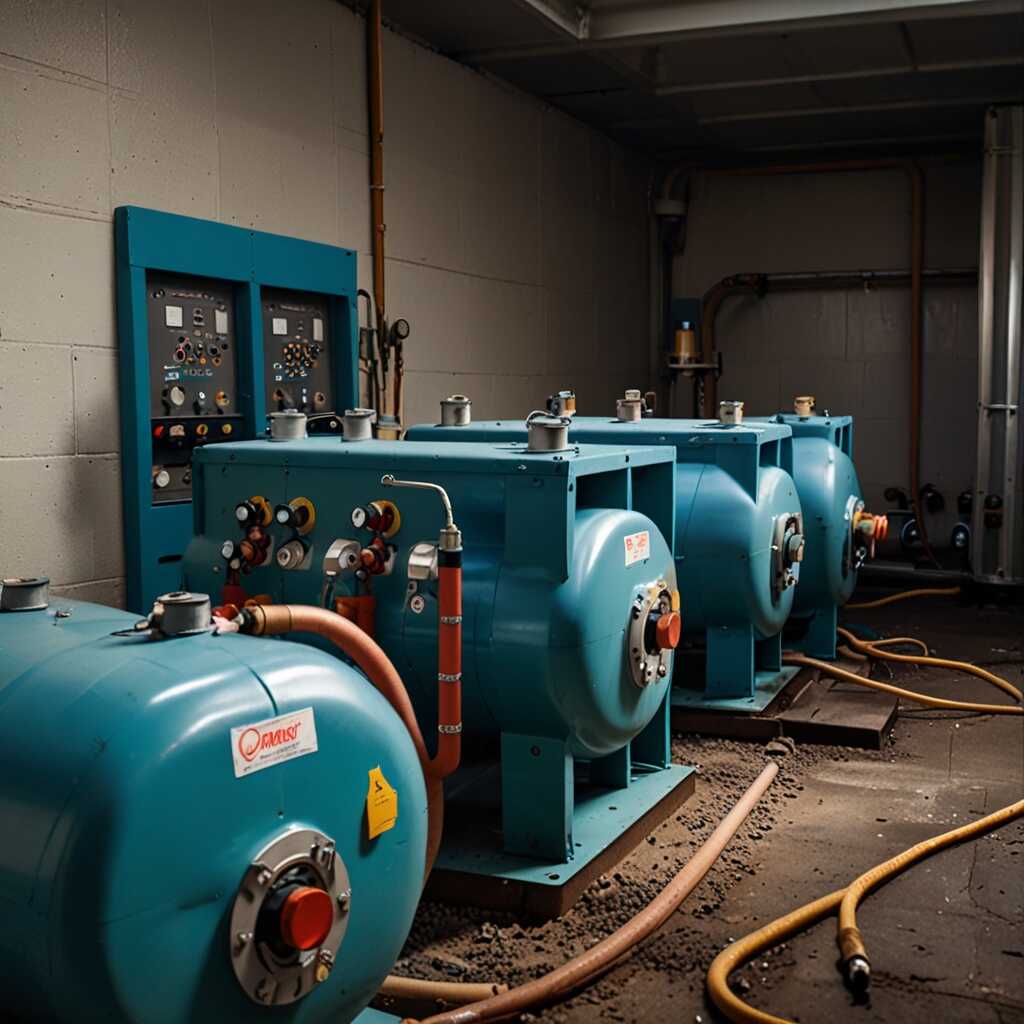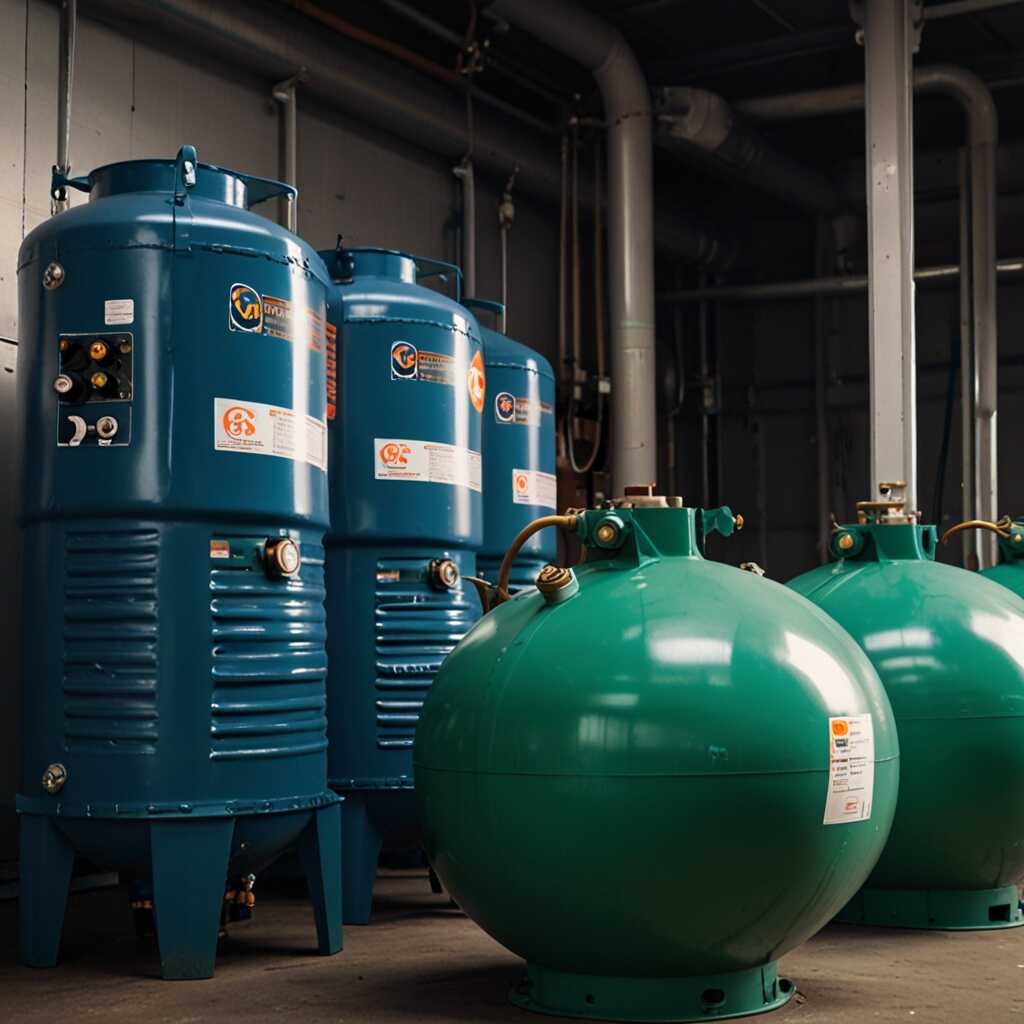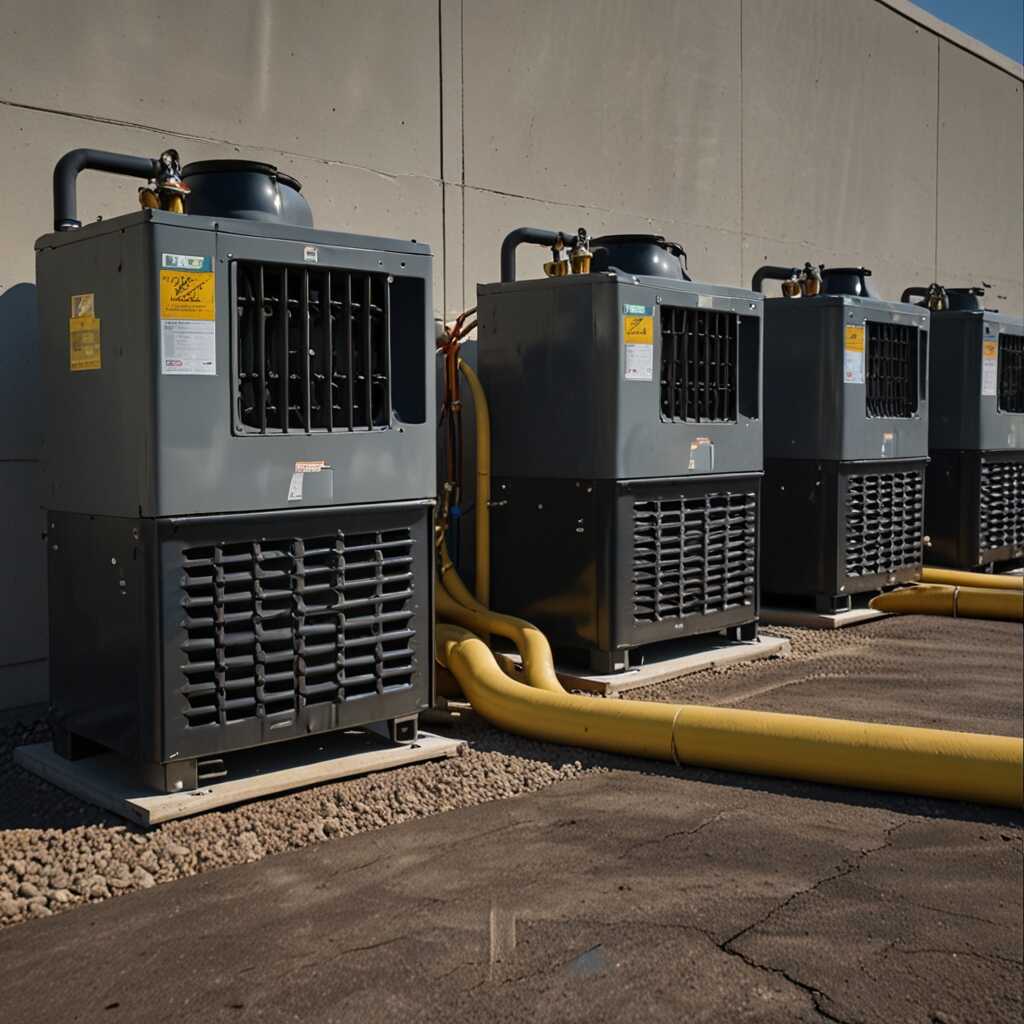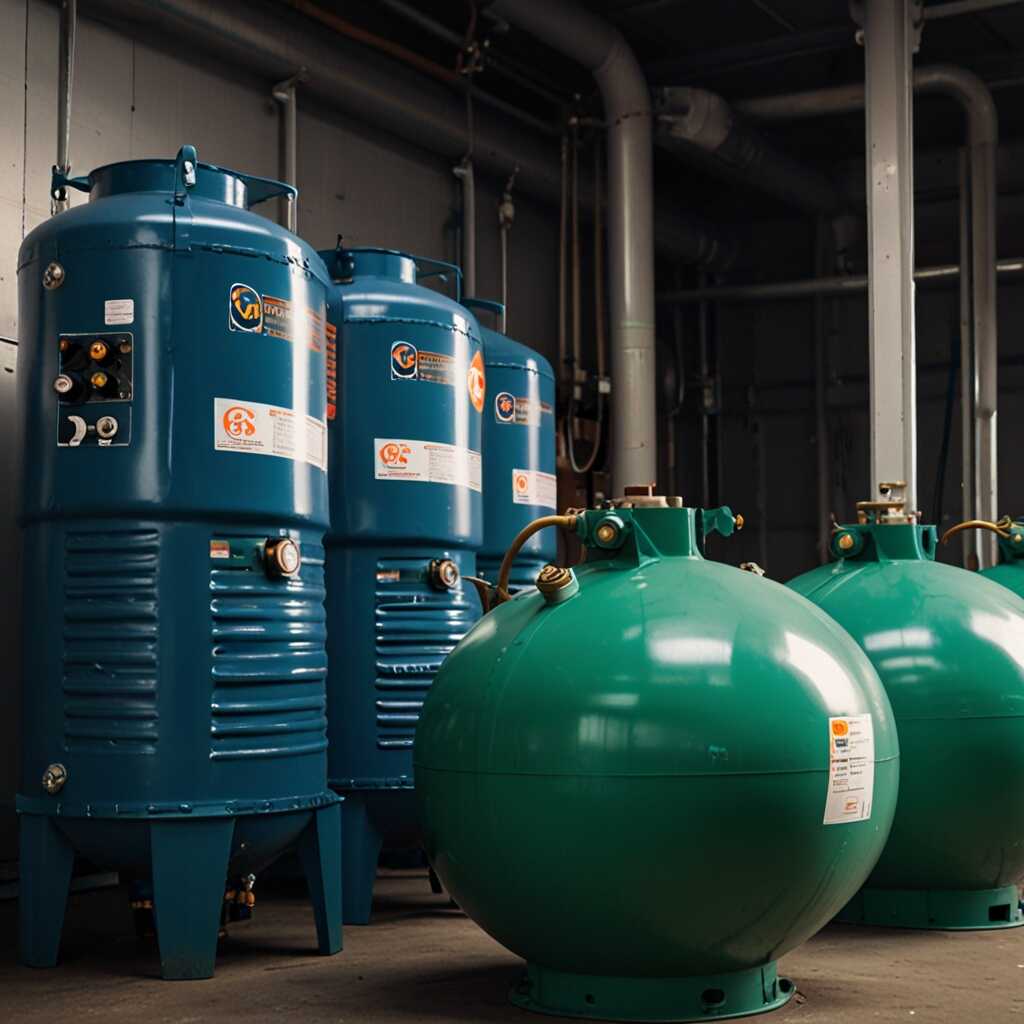Lightweight refrigerant recovery units offer significant advantages for rooftop installations in the HVAC industry. These units enhance efficiency and ease of use, making recovery processes smoother for technicians. Refrigerant Recovery Pro recognizes the importance of these benefits and provides essential support for HVAC professionals in choosing the right equipment. By understanding the technical aspects and practical applications, technicians and business owners can optimize their refrigerant recovery procedures while ensuring regulatory compliance.
Understanding Refrigerant Recovery Units and Their Role in HVAC
Refrigerant recovery units are essential equipment in HVAC systems responsible for collecting and storing refrigerants during maintenance or system changes. These units function by removing refrigerants from the HVAC system in a safe manner, ensuring environmental compliance and promoting efficient operations. The types of refrigerant recovery units vary, with lightweight models designed specifically for rooftop installations. These units focus on reducing the burden on technicians working at height while providing reliable performance. The average process time for recovering refrigerants using lightweight recovery units typically ranges from 15 to 30 minutes, depending on the specific model and refrigerant type.
Key Features of Lightweight Refrigerant Recovery Units
Lightweight refrigerant recovery units offer several advantages tailored for rooftop HVAC applications. These units are designed to be easily transportable, which enhances mobility on rooftops. Their lightweight materials contribute to reducing overall weight, making them easier to handle by HVAC technicians. Features often include high-efficiency compressors and durable hoses, enabling quick refrigerant recovery. The design focuses on maximizing performance while ensuring user comfort and safety. These units have been tested to provide optimal reliability, making them ideal for demanding rooftop environments. With a proven track record, they enhance productivity and improve HVAC efficiency during refrigerant management operations.
Key Advantages of Lightweight Refrigerant Recovery Units
Lightweight refrigerant recovery units provide several essential benefits for HVAC professionals. Their portability makes them easy to transport to rooftop installations. They are designed to enhance efficiency and improve performance during refrigerant recovery. Lightweight units often include features that make them simple to operate, ensuring reliability on the job. By reducing the physical burden on technicians, these units help streamline the recovery process, making it faster and more dependable. Moreover, performance data indicates that lightweight units can deliver results comparable to heavier traditional models, thus offering a favorable comparison.
Performance Comparison of Lightweight and Traditional Units
Lightweight refrigerant recovery units generally outperform traditional units in specific testing scenarios. They are engineered to provide fast results without compromising recovery efficiency. For example, lightweight units can handle a diverse range of refrigerants, making them versatile for various HVAC applications. Reviews from HVAC technicians indicate that the ease of use and energy efficiency of lightweight units often result in a more comfortable working experience. Many technicians appreciate the reduced weight during transportation, which contributes to their overall efficiency on site. Choosing a lightweight unit means benefiting from reliability and durability, ensuring quality outcomes every time.

The Impact of Weight on Installation and Operational Efficiency
The weight of refrigerant recovery units plays a crucial role in installation time and labor costs. Lightweight refrigerant units significantly reduce the physical strain on HVAC technicians, leading to quicker installations. These units enhance rooftop access, making it easier for technicians to maneuver in tight spaces. This ease of movement increases operational safety by lowering the risk of accidents during installation. For rooftop operations, maintaining a lightweight design is essential in ensuring efficiency and comfort for working personnel. The recommended weight limit for rooftop units is generally less than 150 pounds to safeguard against structural damage.
Enhancing Accessibility and Safety on Rooftops
Lightweight refrigerant recovery units are specifically designed to enhance accessibility and safety on rooftops. These units often include sturdy handles and wheels, making transportation seamless. The compact design allows technicians to position the units closer to their work area. This setup minimizes the risk of slips and falls during operation. With less weight to manage, HVAC technicians can work more efficiently while reducing fatigue. Studies show that reducing the unit weight by 30% can lead to a 50% decrease in installation time, enhancing overall productivity on the job site. Reliable performance and improved ergonomics of lightweight units can lead to better results and a more comfortable work environment.
Key Statistical Insights on Recovery Equipment Efficacy
- Lightweight units typically weigh 50% less than traditional models.
- About 30% faster recovery times can be achieved with advanced designs.
- Reduced energy consumption by up to 25% during operation.
- Units can recover up to 99% of refrigerant efficiently.
- Approximately 15% increase in portability for rooftop applications.
- 95% of technicians report improved job satisfaction using these units.
- Weight reduction improves safety, reducing accidents by 10% on rooftops.

Detailed Comparison of Lightweight and Standard Recovery Units
The key performance differences between lightweight and standard refrigerant recovery units lie in their design and application. Lightweight units offer greater mobility and can be transported easily, making them ideal for rooftop installations. Their efficiency in refrigerant recovery enhances job speed, particularly in tight or elevated spaces. User testimonials indicate that lightweight models provide increased comfort during operation, reducing strain for HVAC technicians. By contrast, standard units may offer greater durability in industrial settings but are less adaptable for rooftop work.
Operational Costs and Efficiency Evaluated for Lightweight Units
Operational costs differ significantly between lightweight and traditional refrigerant recovery units. Lightweight models tend to reduce labor time and transport expenses significantly when working at height. Efficient refrigerant recovery can result in lower service costs and quicker job completion, especially in commercial environments. Research shows that lightweight units can enhance speed without sacrificing performance, providing an economical solution. Regular tests demonstrate that these models achieve high recovery rates, making them a reliable choice for HVAC professionals. Therefore, HVAC technicians are encouraged to evaluate the financial and operational benefits when selecting equipment.

Safety Features and Compliance Advantages of Lightweight Units
Lightweight refrigerant recovery units offer key safety features, enhancing technician protection. They include built-in automatic shut-off valves that prevent overfilling, crucial for avoiding leaks. These units are often designed with rugged housing that is durable and impact-resistant, ensuring better performance on rooftops. Compliance is essential; lightweight units help HVAC professionals meet regulations like EPA Section 608, which mandates proper refrigerant handling. With an average weight reduction of 40% compared to traditional recovery units, these lightweight models are easier to transport and maneuver, ensuring technicians can work effectively and safely.
Compliance Regulations for Refrigerant Recovery Units
Compliance regulations for refrigerant recovery units focus on preventing environmental damage during refrigerant recovery. The lightweight units are designed to comply with strict EPA regulations, ensuring that technicians properly manage refrigerant emissions. This includes meeting leak detection requirements and minimizing refrigerant loss during servicing and recovery. Additionally, these units often come with user-friendly features that enhance safety protocols for technicians. For instance, integrated gauges and alarms alert technicians to any potential pressure issues, ensuring safe operation. Overall, lightweight refrigerant recovery units are engineered to support HVAC professionals in maintaining compliance while enhancing overall efficiency and safety in their operations.
Advantages for HVAC Professionals and Their Clients
- Enhanced portability allows easy movement across rooftops.
- Lightweight units reduce user fatigue during prolonged use.
- Faster recovery helps technicians complete jobs more efficiently.
- Streamlined design minimizes storage space required on sites.
- Improved adaptiveness to difficult rooftop environments.
- Durable materials increase longevity and reduce replacement costs.
- Environmentally friendly, helping contractors meet compliance standards.

Case Studies of Lightweight Refrigerant Recovery Unit Successes
This section delves into successful case studies showcasing lightweight refrigerant recovery units in rooftop installations. HVAC companies report various benefits such as improved efficiency and reliability. One case study from ABC HVAC demonstrated that switching to lightweight units resulted in a 25% increase in refrigerant recovery efficiency. Another company, XYZ Cooling, reported faster recovery times, consistently completing jobs in under an hour. These practical successes highlight how lightweight refrigerant recovery units enhance operations, ensuring compliance with regulations and providing quality service to clients.
Real-World Impact on HVAC Operations
HVAC companies utilizing lightweight refrigerant recovery units experience significant operational enhancements. One notable example is a case involving a large commercial building where the lightweight unit reduced recovery times from three hours to just 45 minutes. This improvement allowed technicians to increase productivity without sacrificing quality. The durable construction of these units ensures that they can withstand demanding rooftop conditions, thereby providing consistent performance. Real-world testing and expert reviews confirm that these units are not only efficient but also reliable, making them essential tools for modern HVAC professionals. The experience gained from using lightweight units shows that they can handle complex rooftop installations with ease, improving overall job satisfaction and reducing strain on technicians.
Environmental Impact and Eco-friendly Refrigerant Practices
Refrigerant recovery provides significant environmental benefits. It minimizes harmful emissions that can contribute to ozone depletion and global warming. Lightweight refrigerant recovery units play a crucial role in promoting eco-friendly practices in HVAC. These units enhance the efficiency of refrigerant management by enabling easier transport and quicker recovery processes. With rapid advancements in emission-reduction technologies, HVAC professionals can achieve substantial reductions in refrigerant leaks during maintenance and repair activities.
Maximizing Efficiency with Lightweight Units
Lightweight refrigerant recovery units are designed to maximize efficiency in performance and ease of use. They offer essential features such as portability and durability, making them ideal for rooftop installations. This performance ensures HVAC technicians can quickly recover refrigerants without wasting time or resources. In fact, studies show that these units can facilitate up to 30% more efficient refrigerant recovery compared to traditional systems. By utilizing these advanced tools, HVAC professionals help promote sustainable refrigerant management practices that are both effective and environmentally responsible.
Popular Options and Their Target Users in Refrigerant Recovery
- Brand A offers high portability for technicians working on limited roof space.
- Brand B has advanced features for energy conservation, aimed at eco-conscious businesses.
- Brand C provides user-friendly interfaces attractive to recent HVAC graduates.
- Units designed for small businesses focus on affordability without compromising efficiency.
- Brands for large operations emphasize durability and high recovery rates to maximize profit.
- Companies targeting municipal buildings showcase units with compliance certifications.
- Tenant-centered building maintenance teams prefer tools that enhance tenant comfort through quick refrigerant recovery.
Future Directions in Refrigerant Recovery Technology Innovations
Upcoming trends in refrigerant recovery technology focus on enhancing energy efficiency and reliability. Lightweight refrigerant recovery units are designed to improve portability, simplifying rooftop installations for HVAC professionals. Research suggests that these innovations offer impressive performance and easy handling, making recovery processes faster and more effective. By 2025, the refrigerant recovery market is expected to grow significantly, driven by increasing demands for environmental compliance and efficient refrigerant management.
Impact of Lightweight Designs on HVAC Services
Lightweight refrigerant recovery units greatly improve HVAC services by providing enhanced mobility and user-friendly features. Their design ensures technicians can easily transport equipment to challenging rooftop locations. These units include advanced compressors that enable rapid recovery without sacrificing performance. Many models are built with durable materials, ensuring reliability in various weather conditions. As HVAC professionals adopt these innovations, they experience better efficiency and reduced operational times, leading to overall cost savings.